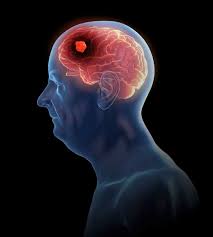Cancers affecting the Head
Each year, thousands of individuals face the challenging diagnosis of head and neck cancers, significantly impacting their quality of life. Advances in medical technology have greatly enhanced our ability to detect, treat, and manage these cancers, providing patients with improved survival rates and quality of life.
At the Cancer Clinic, we provide comprehensive, patient-centered care with a specialized focus on early diagnosis, advanced treatments, and personalized therapeutic approaches for head and neck cancers.

Parts of the head affected by Cancer
1. Buccal Mucosa
Cancer affecting the inner lining of the cheeks, often linked to tobacco use.
- Symptoms:
- Persistent ulcers or sores
- Pain in the cheek area
- Difficulty opening the mouth
- White or red patches inside the mouth
2. Tongue
Cancer develops on the tongue’s surface, frequently associated with smoking, alcohol consumption, and HPV infection.
- Symptoms:
- Persistent sores on the tongue
- Tongue pain
- Difficulty speaking or swallowing
- Bleeding or numbness on the tongue
3. Base Tongue
Cancer located at the base of the tongue, deeper in the throat, commonly connected to HPV.
- Symptoms:
- Throat discomfort or pain
- Difficulty swallowing
- Lump sensation in the throat
- Persistent ear pain
4. Floor of Mouth
Cancer occurring under the tongue, commonly related to tobacco and alcohol use.
- Symptoms:
- Persistent pain or swelling under the tongue
- Difficulty moving the tongue
- Numbness in the mouth
- White or red patches in the mouth
Mandible and Alveolus
Cancer affecting the jawbone and the socket area around teeth, frequently associated with tobacco use.
- Symptoms:
- Jaw pain or swelling
- Loose teeth or poorly fitting dentures
- Difficulty chewing
- Persistent oral ulcers
Hard Palate
Cancer develops on the roof of the mouth, often linked to tobacco and alcohol.
- Symptoms:
- Sores or swelling on the roof of the mouth
- Pain or discomfort when eating
- Difficulty speaking
- Changes in mouth appearance
Soft Palate
Cancer affecting the soft tissue at the back of the roof of the mouth, commonly associated with HPV infection.
- Symptoms:
- Difficulty swallowing
- Persistent sore throat
- Changes in voice quality
- Lump or mass in the throat
Maxilla
Cancer involving the upper jawbone, typically linked to prolonged tobacco use.
- Symptoms:
- Facial swelling or pain
- Loose upper teeth
- Difficulty breathing through the nose
- Nasal discharge or bleeding
Paranasal Sinuses (Base Skull Tumours)
Cancer developing within the nasal cavity and adjacent sinus regions, associated with environmental irritants and occupational exposures.
- Symptoms:
- Chronic nasal congestion or obstruction
- Facial pain or numbness
- Vision changes
- Persistent headaches
Brain Cancer
Cancer that originates in the brain or spreads to it from other parts of the body. It can affect cognitive function, motor skills, and overall neurological health. Depending on its type and location, it may grow aggressively or remain slow-growing, requiring precise diagnosis and treatment.
Symptoms:
- Persistent headaches, especially worse in the morning or with activity
- Nausea or vomiting without known cause
- Seizures or sudden neurological episodes
- Changes in vision, speech, or hearing
- Difficulty with balance or coordination
- Personality or memory changes
- Numbness or weakness in limbs or one side of the body
Treatments and Outlook
Our team combines advanced oncological expertise with a patient-centered approach to deliver comprehensive cancer care. We provide advanced, patient-centered cancer care, focusing on effective treatments that minimize physical and emotional impacts while preserving quality of life. Our holistic approach includes organ preservation (plastic surgery combined with complex orthopedic procedures), personalized strategies, emotional support, pain management, nutritional counseling, physical therapy, and stress management. Rehabilitation programs, such as post-surgery therapy, mobility assistance, and holistic options like yoga and meditation, empower patients to recover with strength and confidence, promoting overall healing of both body and mind. Treatment plans depend on the type, stage, and location of the sarcoma. A multidisciplinary approach is used to ensure optimal outcomes.
Targeted Therapy :
● Focuses on specific cancer cell proteins to stop growth.
● Minimizes damage to healthy tissues.
Immunotherapy:
●Boosts the immune system to identify and destroy cancer cells.
● Effective for certain subtypes.
While bone cancer cannot always be prevented, early detection plays a significant role in
improving outcomes.
